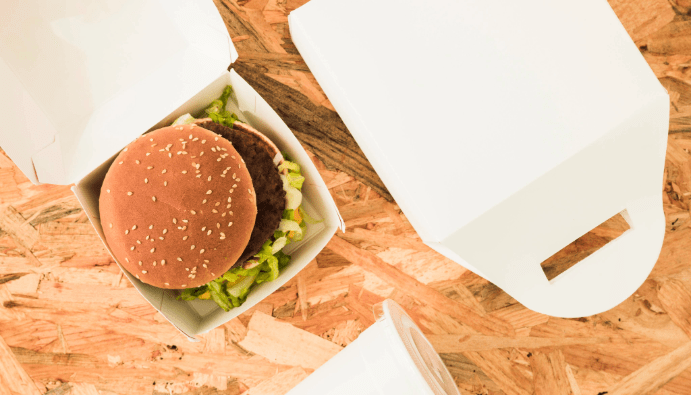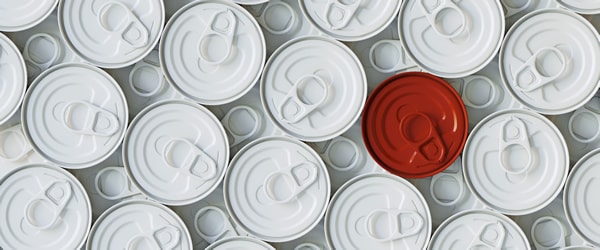Paper and Cardboard

Safeguard Your Products and Consumer Trust: Paper and Cardboard Testing
Paper and cardboard offer versatility, sustainability, and recyclability as packaging options. Their diverse uses, from food containers to shipping materials, demonstrate their remarkable adaptability. However, their unique composition, including the potential presence of inks, recycled fibers, and coatings, requires careful attention to ensure product safety. Further, the source of the paper or cardboard, whether virgin or recycled, can impact potential contaminants. Navigating the complex landscape of global regulations adds another layer of consideration for safe and compliant paper and cardboard packaging.
Key Regulations for Paper and Cardboard PackagingThe diverse regulations governing paper and cardboard packaging across different countries and regulatory bodies can lead to complexity and indecision. Understanding and adhering to these regulations is essential for ensuring product safety and compliance.
Achieving EU Market Compliance: EU Regulation (EC) No. 1935/2004While EU Regulation (EC) No. 1935/2004 does not contain extensive details specific to paper and cardboard, it's the cornerstone of food contact material safety within the European Union. This framework regulation sets the overarching principles that manufacturers must adhere to, ensuring no harm to consumers and no unacceptable changes to the composition or sensory properties of food. Understanding these key principles is essential, even for seemingly simple materials like paper and cardboard.
Council of Europe (CoE) (Resolution AP (2002)Resolution on Paper and Board provides recommendations, though not legally binding, for ensuring the safety of paper and cardboard materials intended for food contact. These recommendations address critical aspects like restricting heavy metals and other contaminants, promoting the safe use of recycled content.
The LFGB and BfR – Germany's Framework for SafetyThe LFGB (Lebensmittel-, Bedarfsgegenstände- und Futtermittelgesetzbuch – The Food, Consumer Goods, and Feed Code) is the cornerstone of German legislation governing the safety of materials coming into contact with food. The LFGB establishes the fundamental principle that no material should endanger human health or unacceptably alter the composition, smell, or taste of food.
While the LFGB provides this legal framework, the BfR (Bundesinstitut für Risikobewertung – the Federal Institute for Risk Assessment) plays a crucial role in providing in-depth scientific evaluations and issuing detailed recommendations for specific materials. These BfR recommendations, while not legally binding, are widely respected by the industry and often serve as the benchmark for ensuring the safety of food contact materials in the German market
DGCCRF Guidance and The France Regulatory FrameworkWhile European Union Regulation (EC) No 1935/2004 establishes broad principles for food contact materials, it does not contain comprehensive, specific regulations for paper and cardboard. To address this gap, the French DGCCRF (Directorate General for Competition Policy, Consumer Affairs, and Fraud Control) plays a crucial role by issuing detailed guidance notes. These notes provide practical recommendations and outline verification methods designed to ensure paper and cardboard products intended for food contact meet the highest safety standards.
DM 21: Foundations of Italian Compliance for Paper & Cardboard Food ContactDM 21 (Decreto Ministeriale 21 marzo 1973) is Italy's foundational legislation for food contact materials and articles. It aims to prevent the migration of harmful substances from packaging into food, ensuring consumer safety.
ALLEGATO VII - Sezione IV - Carte e cartoni is a section of the Italian Ministerial Decree 21 March 1973 (DM 21) that sets forth specific requirements for paper and cardboard used in food contact applications. The requirements are designed to ensure that these materials do not migrate harmful substances into food, thereby protecting consumer safety.
Achieving US Market Compliance:
Understanding 21 CFR Part 176 for Paper & CardboardThe FDA's 21 CFR Part 176 is essential for ensuring the safety of paper and cardboard materials intended for food contact within the United States. Central to US food contact regulations, it specifically addresses indirect food additives – substances that may migrate from the packaging into the food itself. Within Title 21 of the Code of Federal Regulations (CFR), Part 176 is of paramount importance for paper and cardboard manufacturers. Titled "Indirect Food Additives: Paper and Paperboard Components," this part outlines the specific substances permitted for use in paper and cardboard that may contact food.
Achieving Chinese Market Compliance: National standards and regulations, especially the GB 4806 series (General Safety and Hygiene Requirements for Food Contact Materials and Articles), provide essential compliance guidelines for manufacturers.
The GB 4806 Series Standards Cover:• Overall safety requirements for paper and cardboard (e.g., minimum fiber content, limitations on fillers and auxiliary materials)
• Specific uses of paper and cardboard (e.g., contact with different food types may necessitate additional requirements such as oil resistance or acidity resistance)
Understanding and adhering to relevant Chinese regulations is essential for ensuring the safe use of paper and cardboard in food contact applications. By becoming familiar with the relevant standards and requirements, manufacturers can guarantee their products meet safety standards and provide consumers with reliable food contact materials.
Testing for Compliance: Ensuring Your Paper & Cardboard Meet Global StandardsUnderstanding the complex landscape of regulations for paper and board food contact materials is essential. Equally important is ensuring your products actually meet those standards through comprehensive testing. Our laboratory offers a wide array of tests aligned with key regulations. We offer a comprehensive suite of tests to verify the safety and compliance of your paper and cardboard products, addressing key areas of concern for food contact safety.
Our Main Test List• Extractability Substance
• Azo Colourants
• PCB
• Chloroform-soluble Extractives Residue
• Polycyclic Aromatic Hydrocarbons
• Phthalates Content
• Overall Migration
• Benzophenone
• Solvents Residue
• 2,6-diisopropylnaphthalene (DIPN)
• Bisphenol A
• 3-chloro-1,2-propanediol
• Element Content and Water Extract
• Bisphenol S
• 1,3-Dichloro-2-propanol
• Pentachlorophenol
• Primary Aromatic Amines
• Total Dry Residue - Hot Water
• Formaldehyde
• Epichlorohydrin
• Total Nitrogen Content
• Michler's ketone and 4,4'-bis(diethylamino)benzophenone
Adapting to Your Specific NeedsOur in-house R&D laboratory underlines our dedication to providing proactive testing solutions. We can quickly develop and validate new tests through method development studies, ensuring you stay ahead of emerging regulations and niche material need.

